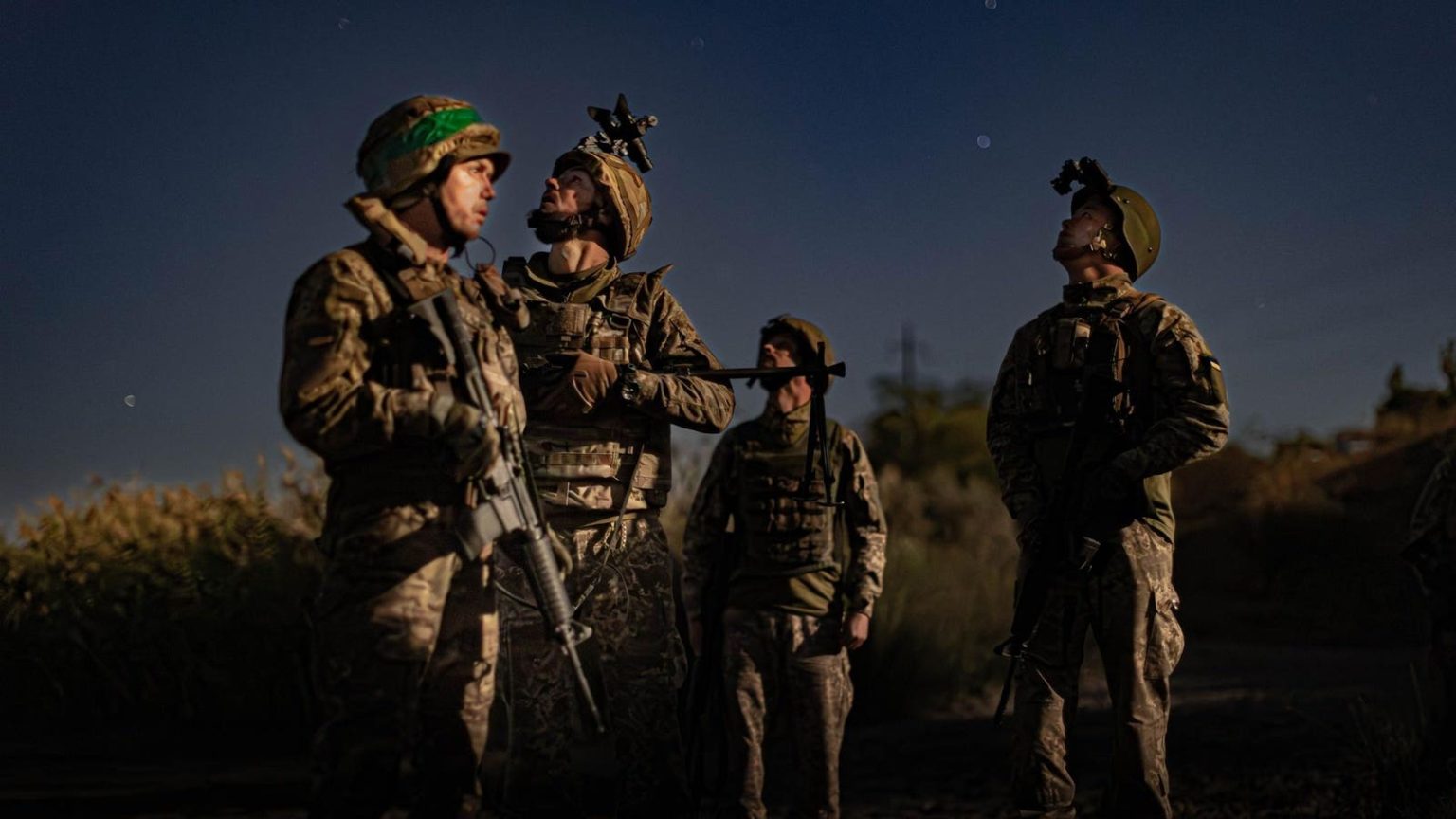Krynky is a small settlement on the Russian-occupied left bank of the wide Dnipro River in southern Ukraine’s Kherson Oblast.
When someone—Russian saboteurs, it seems—blew up the Kakhovka Dam upstream of Krynky on June 6, the settlement quickly flooded. Most of its residents fled to higher ground.
Krynky’s misfortunes were only beginning. Four and a half months later on Oct. 19, Ukrainian troops from the 38th Marine Brigade crossed the Dnipro River and infiltrated Krynky.
Ukrainian forces have launched many small raids across the Dnipro since liberating northern Kherson Oblast on the river’s right bank in late 2022. Typically, the Ukrainians kill or capture a few Russians, inflict some damage then flee as Russian artillery and drones dial in.
But the Oct. 19 operation was different. This time, the Ukrainians stayed. Ten days later, they’re not only still in Krynky, they’ve extended their control along the three-mile-wide settlement.
One Russian marine from the 810th Guards Naval Infantry Brigade described the Russian brigade’s situation as “very difficult.”
The Ukrainians “are constantly firing at us with artillery, using cluster munitions and, most importantly, they are using a whole horde of [first-person-view] drones and UAVs with [grenades] that work around the clock, preventing the evacuation of the wounded and the delivery of ammunition.”
Krynky is a bridgehead: a possible place for Ukrainian forces to get across the Dnipro in large numbers, with heavy equipment, and add a front to their four-month-old southern counteroffensive.
Maybe. Bridgeheads are fragile—vulnerable to artillery, air strikes and mechanized counterattacks—until significant heavy forces cross over, expand the boundary and add defensive firepower. While the 38th Marine Brigade’s infantry have crossed the river, there isn’t yet evidence they’ve brought along armored vehicles, air-defenses and engineering equipment.
“Attempting significant advances without the support of armor is unlikely to succeed, especially in an environment where the enemy can readily deploy armored vehicles,” the independent Conflict Intelligence Team noted.
All that is to say, the Russian army still has time to attack the bridgehead—and to crush it before it grows any bigger.
It’s obvious why Ukrainian troops would want to get across the Dnipro in large numbers, at or near Krinky. Driving south from Krinky would cut off several Russian regiments around the mouth of the Dnipro and put the Ukrainians at the proverbial doorstep of Russian-occupied Crimea.
But river-crossings are risky. Just ask the Russian army, which in May 2022 tried to use pontoons to cross the Donets River in eastern Ukraine—and got caught on the riverbank by Ukrainian drones and artillery. The ensuing barrage wrecked nearly 80 armored vehicles and killed around 500 Russians.
If the Ukrainians do succeed in building pontoon bridges and getting tanks, fighting vehicles and other heavy equipment across the Dnipro into the Krinky bridgehead, it might be because the Russian force around the settlement is fairly small at the moment—and major reinforcements might never arrive.
Russian forces in Ukraine are stretched thin. Not only are brigades and regiments fighting defensive efforts against Ukraine’s counteroffensive along several axes in southern and eastern Ukraine, they also are mounting offensives in the east: one around Avdiivka and another in the Kreminna Forest.
The Avdiivka offensive in particular has proved extraordinarily costly for the Russians: there, the Ukrainian 110th Mechanized Brigade and neighboring units have killed hundreds of Russians and knocked out scores of armored vehicles, eliminating the equivalent of a brigade in the span of just three weeks.
The Russians aren’t just losing men and materiel around Avdiivka. They also are losing opportunity. That is, opportunity to devote the same forces to some other operation—including any effort to crush the Krynky bridgehead.
The best reason for the Kremlin to hope for a favorable outcome in Krynky is that Ukrainian forces also are under significant strain as they struggle to sustain their counteroffensive while also holding on to Avdiivka.
Nearly two years into Russia’s wider war on Ukraine, “both sides are almost equal in force,” CIT explained. “Neither has sufficient resources to carry out and exploit a full-fledged breakthrough.”
It’s apparent, however, that Kyiv isn’t willing to trade Krynky or some other offensive effort for Avdiivka, which lies just northwest of Russian-occupied Donetsk in a sector where Russian logistics are robust.
Even as the Russians continue throwing battalion after battalion at Avdiivka, the Ukrainians have sent only a few reinforcements to aid the 110th and other brigades in the local garrison.
“Ukrainian officials have already identified the Avdiivka push as a Russian fixing operation, and they are unlikely to unduly commit Ukrainian manpower to this axis,” the Institute for the Study of War in Washington, D.C. noted just a day into the Russian assault.
If the 38th Marine Brigade manages to hold and expand the Krynky bridgehead, that economy of force in Avdiivka—and Kyiv’s willingness to risk that ruined city—might be why.
Read the full article here





